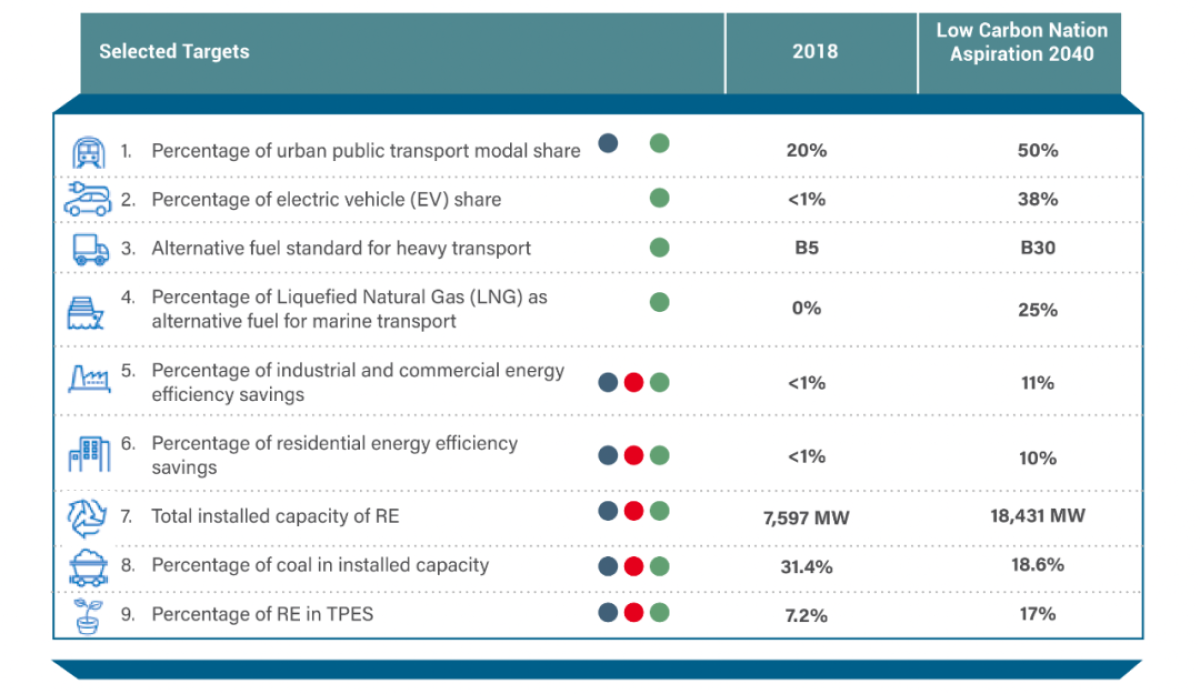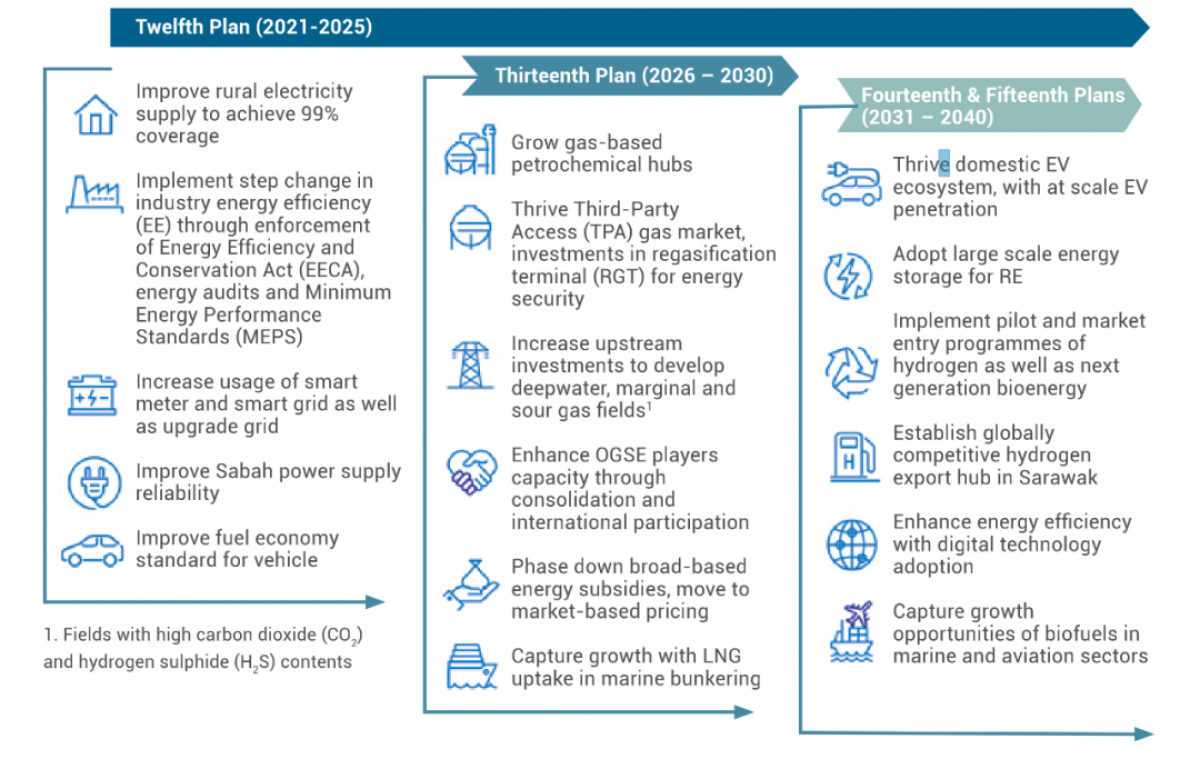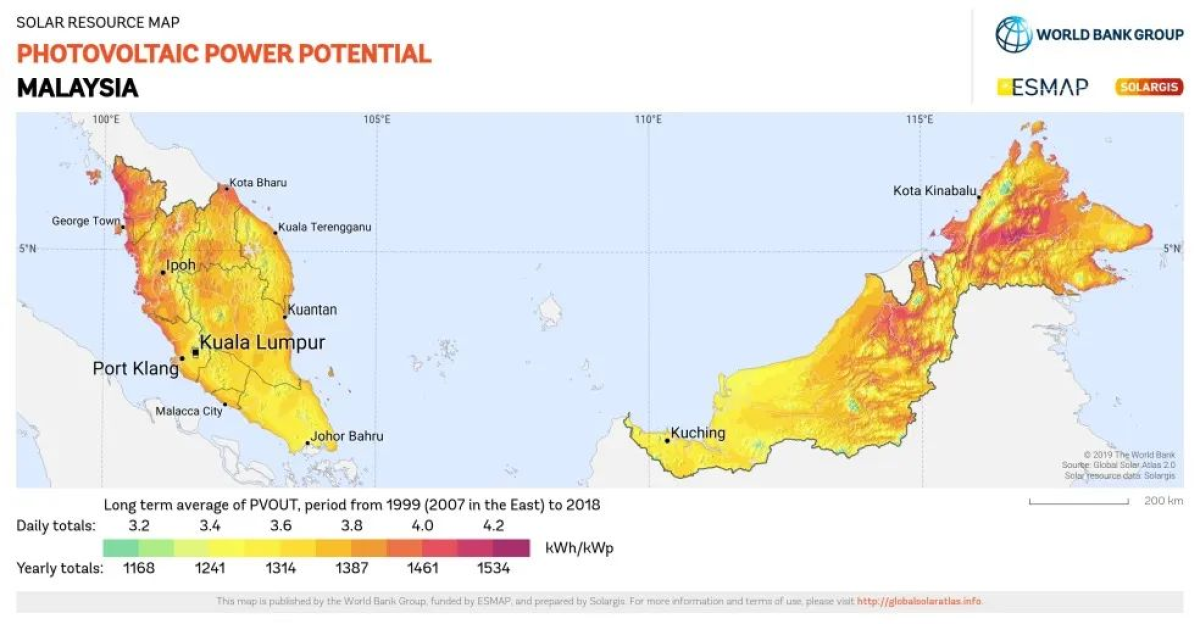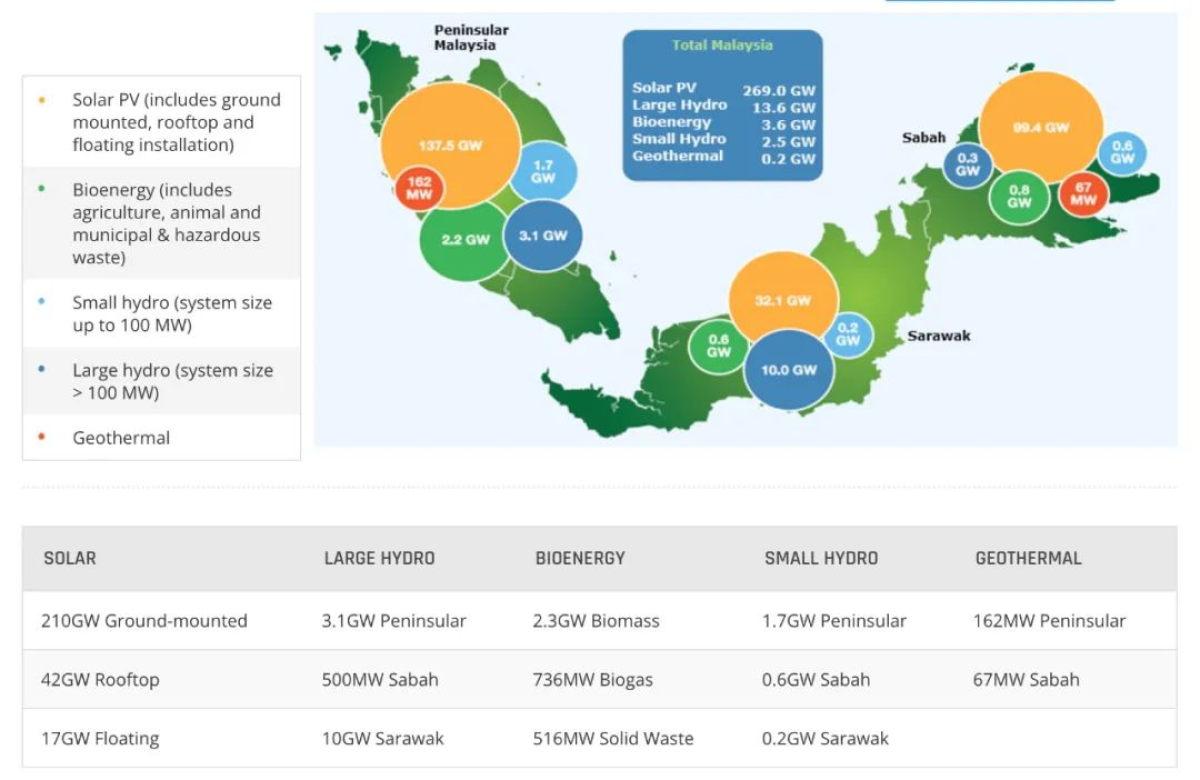
Malaysia's national economy has developed rapidly in recent years, and domestic electricity demand continues to rise. As investment continues to increase and the Malaysian government strives to shift its orientation from fossil fuel-based power generation, its renewable energy market is experiencing good development momentum.
Malaysia's Renewable Energy Action Plan was launched in 2010 to integrate renewable energy into the grid and into the regulatory system. The country is moving forward under the Green Technology Master Plan approved by the Malaysian government in 2017. The strategy aims to generate $43 billion in revenue by 2030 and create more than 200,000 green energy jobs.
Previously we have introduced the solar energy in Vietnam, and this article will introduce you to the latest developments of solar energy in Malaysia, as well as related policies and subsidies.
Main content:
1. Malaysia’s energy development direction
In September 2022, Malaysia released the "National Low Carbon Aspiration 2022-2040" (DTN), which outlines its goals and plans to become a low-carbon country by 2040 and clarifies the government's priority development direction of the energy sector in the next 20 years - electricity and heat.
National Low Carbon Aspiration embodies Malaysia’s forward-looking vision, goals, strategic priorities and driving factors to achieve the goal of low carbon. The policy covers the time span 2022-2040, pursuing the aspirations of a low-carbon nation in 2040 to achieve the strong economic benefits of the energy transition, which is also consistent with the objectives of the Long-term Low Emissions Development Strategy (LT-LEDS), which is to Achieve net greenhouse gas emissions by 2050.
Currently, installed renewable capacity of solar energy in Malaysia has reached 8.892GW. According to the DTN plan, by 2040, the total installed capacity of renewable energy will be increased to 18.431GW, and the overall proportion of renewable energy in the total energy supply will be increased from 7.2% to 17%. Among them, the photovoltaic potential is huge. According to the plan of the Malaysian Energy Authority, the total photovoltaic installed capacity will reach 269GW, including 210GW of large ground power stations, 42GW of home solar power system, and 17GW of floating photovoltaics.

2. Malaysia’s goal on low carbon nation
If Malaysia can fully fulfill its energy and climate commitments, the corresponding clean energy manufacturing jobs will increase by more than 200,000; annual investment will reach 9.2 billion ringgit (about 2.136 billion US dollars).

To ensure the effective implementation, the Malay government has formulated a three-phased plan: short-term (2021-2025), medium-term (2026-2030) and long-term (2031-2040). Key measures include increasing the use of smart grids, upgrading power grids, and adopting large-scale energy storage systems to promote renewable energy development, especially solar energy in Malaysia.

DTN pointed out that between 2022 and 2025, the potential of solar energy in Malaysia needs to be strengthened and focused on.
Key objectives:
- Increase the penetration rate of renewable energy to increase the diversification of fuel sources, improve domestic energy self-sufficiency and environmental sustainability.
- Increase the cost competitiveness of solar resource production to increase energy affordability and reduce the environmental impact of land use of solar energy in Malaysia.
- Leverage synergies and business models with photovoltaic manufacturing and new industries related to solar energy in Malaysia, such as solar leasing, peer-to-peer (P2P) transactions, etc., and also the relevant products such as solar inverters like 2000w inverter or 3000w inverter.
Specific measures:
- Incentivize dual-purpose agricultural solar power stations and implement agro-solar complementation to improve land productivity and environmental sustainability.
- Further exploring high potential water surface photovoltaics, including synergies between hydro and solar energy in Malaysia.
- Increase the availability and competitiveness of private capital for solar investment by optimizing equity holding rules and strengthening investigations in the bid evaluation process.
- Extend the Net Energy Metering policy (NEM) to continue to encourage industry development and then transition to other forms of compensation, such as compensation for replacement cost rates as the industry matures.
- Increase the financial sources of distributed solar energy in Malaysia through the concentrated development of rooftop solar energy, and enhance the attractiveness of distributed solar energy through P2P and power purchase agreements (PPA).
- Strengthen the synergy between the entire solar energy value chain, upstream manufacturing, and downstream development.

3. Policies on solar energy in Malaysia
Key objectives:
- Attract foreign investment and retain existing domestic investment by meeting specific ESG requirements of global investors (such as RE100).
- Keep pace with investors’ changing ESG and renewable energy requirements to achieve competitive advantage.
- Benefit from spillover effects, such as the contribution to GDP and job creation after foreign investment comes in.
Specific measures:
- Strengthen the renewable energy mechanism
- Attract renewable energy through power purchase agreements (PPAs), supported by structural reforms and a comprehensive technical, financing and regulatory framework, and selecting different needs based on various environmental, social and governance factors.
- Provide companies with the market capacity to undertake renewable energy to attract foreign investment and enterprises into Malaysia.
Policy support:
① On-grid electricity price
The Renewable Energy Law introduced feed-in tariffs in 2011, aiming to increase renewable energy power generation. The feed-in tariff system forces entities licensed to distribute electricity ("licensed distributors") to pay a fixed feed-in tariff rate (an annual fixed rate) from a specific company holding a feed-in approval certificate issued by the Sustainable Energy Development Authority/ Personal electricity purchase. Licensed power distributors will pay for renewable energy supplied to the grid for a specified period of time (up to 21 years).
To fund the scheme, a surcharge is levied on the bills of consumers who use more than a set amount of electricity (300 kWh). The funds collected will then be used to pay for renewable energy generated through the feed-in tariff mechanism. In 2014, the surcharge was increased from 1% to 1.6%, resulting in an additional MYR325 million in funding from the initial MYR300 million.
② NEM (Net Energy Metering)
NEM (Net Energy Metering) means that the power generated by solar energy in Malaysia will be consumed first, and the excess power will be sold to TNB (Malaysian Power Company) in the form of electricity price deduction.
- NEM 2.0: Launched on January 1, 2019, allows excess solar PV power to be exported to the grid on a “one-to-one” offset basis. For ten years after signing a contract with TNB, users can obtain transmission points and use these points to offset part of TNB's electricity bills. The 500MW quota under NEM 2.0 has been fully subscribed by December 31, 2020. Applicable categories are photovoltaic modules installed in parking lots or on the ground.
- NEM 3.0: Launched on December 29, 2020, effective from 2021-2023, with a total quota of 500MW. The applicable category is photovoltaic modules powered by TNB on the roof of a building in the same premises.
|
Quota Allocation |
|||
|
NEM 3.0 Initiative/programme |
NEM Rakyat |
NEM GoMEn |
NOVA |
|
Year |
2021-2023 |
||
|
Total, MWac |
100 |
100 |
300 |
4. Projects of solar energy in Malaysia
① Large scale solar project LSS
Large-scale ground power stations dominate the market of solar energy in Malaysia, with a potential of 210GW. The Malaysia Energy Commission began bidding for large solar scale (LSS) projects in 2016 to reduce the cost of electricity (LCOE) of photovoltaic power stations.
The first bidding was held in 2016 for a large solar power plant of 250MW; a second round of bidding followed in 2017 (with a total capacity of 460MW); the third round of bidding ended on August 19, 2019; and in March 2021, the Malaysia Energy Commission announced the tender finalists in the fourth round of large-scale solar project (LSS4) program, which has pre-selected 30 solar projects with a total installed capacity of 823 MW.
Two projects in different project categories with a total capacity of 823.06 MW were pre-selected in a tender.
The first category includes 20 projects with capacities of 10 to 30 MW, with an allocated capacity of 323.06 MW, with bidding ranging from MYR 0.1850 (USD 0.044) to MYR 0.2481 (USD 0.059) per kWh.
The second category includes 10 projects with a capacity of 30 to 50 MW, with an allocated capacity of 500 MW, with bidding ranging from MYR 0.1768 (USD 0.042) to MYR 0.1970 (USD 0.047) per kWh.
|
LSS4 |
‘Raw’ offer prices |
No.of Bids Submitted |
No.of Shortlisted Bids |
|
Package P1: |
0.1786-0.2481 |
44 |
20(Price range from RM0.1850/kWh to RM0.2481/kWh) |
|
Package P2: 30MWa.c.- 50MWa.c |
0.1399-0.238893 |
93 |
10 (Price range from RM0.1768/kWh to RM0.1970/kWh) |
|
Total |
30/137 bids were awarded |
||
② Renewable energy roadmap
On December 30, 2021, the Malaysian Energy Authority finalized the Malaysia Renewable Energy Roadmap 2035 (MyRER), which will serve as a strategic framework for the country to establish a low-carbon power sector.
MyRER has developed strategies to achieve the government's commitment to install 12,916MW of renewable energy capacity by 2025, with renewable energy generation accounting for 31% of total power generation. According to its renewable energy roadmap, its total potential of solar energy in Malaysia reaches 269GW, including 210GW of large ground power stations, 42GW of rooftop photovoltaics, and 17GW of water surface photovoltaics.

③ Green Technology Financing Scheme (GTFS)
In 2010, Bank Negara Malaysia launched the Green Technology Financing Scheme (GTFS). The project was extended several times after expiration in 2015, and was finally officially restarted (GTFS 2.0) with approval from the Ministry of Finance in 2019.
This program is mainly used to fund green technology-related enterprises to promote the development of green technology in Malaysia. As of 2022, MYR 2 billion has been allocated for the program in Budget 2021. Funds under the program are used to finance the production of green products, the utilization of green technologies and the financing of investments or assets related to energy efficiency projects and/or energy performance contracts, with the government bearing a total interest rate of 2% (limited to the first 7 years).
Related posts: solar power in Thailand, top 10 best inverter brands in India, global top 10 best solar inverter brands
















